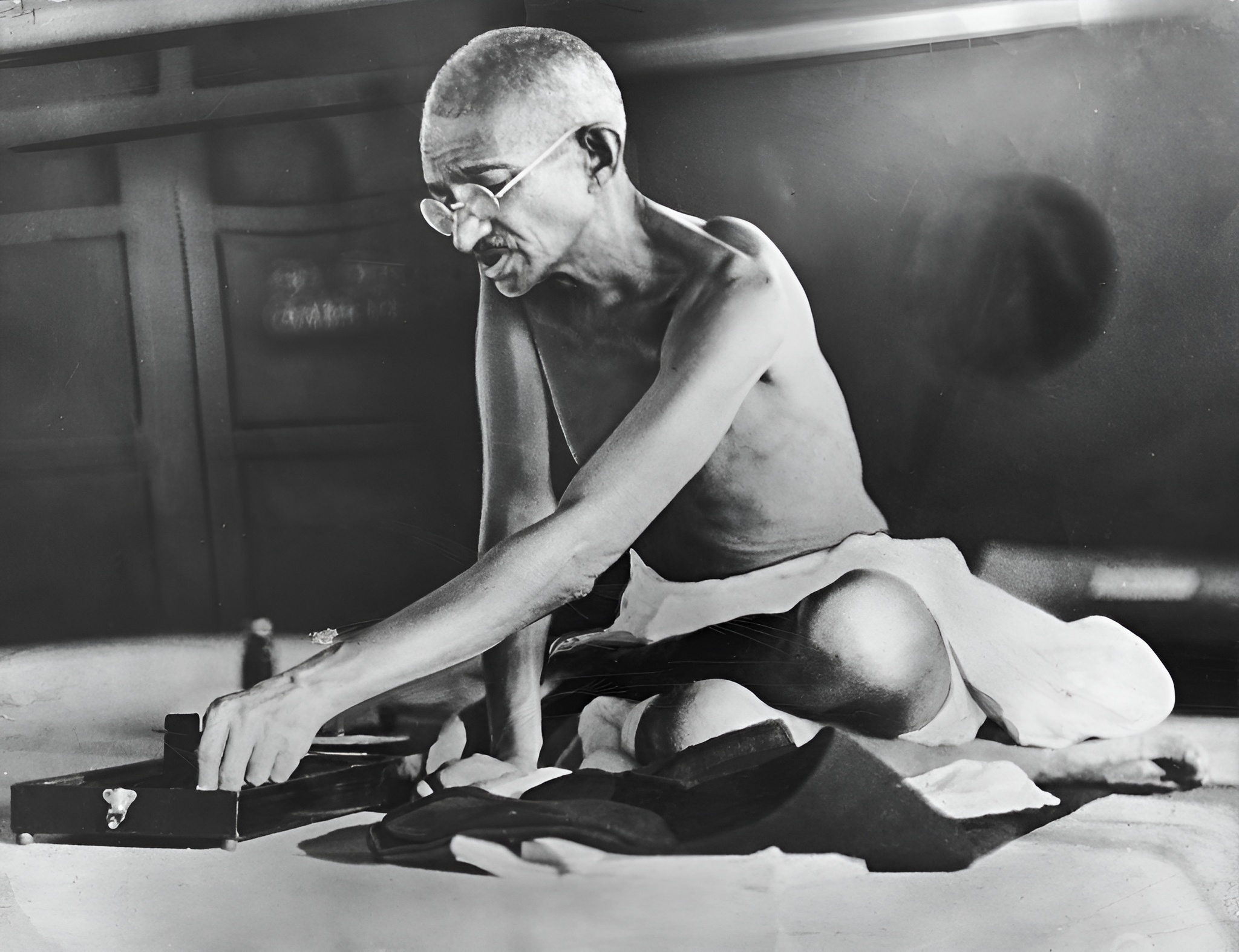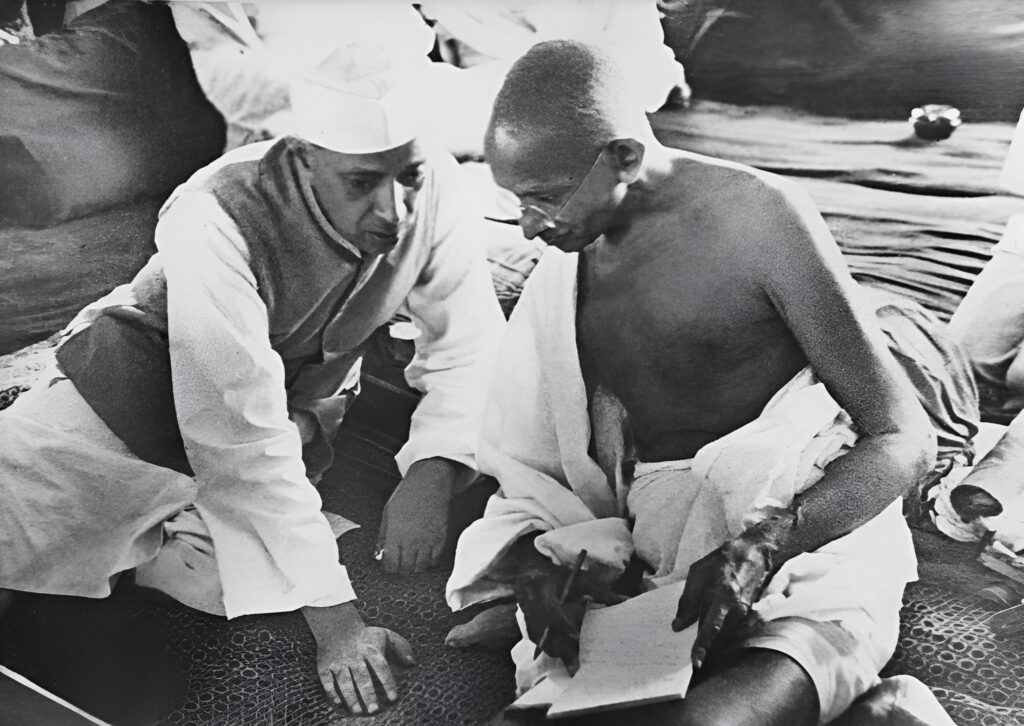In the following article, we explore The Passing of Bapu by Nayantara Sehgal, a moving account of Mahatma Gandhi‘s final moments and the deep impact of his passing on the people of India. Through a series of comprehension questions and grammar exercises featured in the text books of WBBSE (Class X), readers will gain a deeper understanding of the text while also enhancing their language skills. The questions cover key details, vocabulary, sentence structure, and writing tasks, providing a comprehensive approach to analyzing the passage. This article serves as both an educational resource and a tribute to the legacy of Bapu, whose influence continues to inspire generations.
1. Choose the correct alternative to complete the following sentences:
(a) Gandhiji had been shot on his way to (i) the Birla House (ii) the author’s house (iii) a prayer meeting (iv) a family gathering
(b) The author came to know of Gandhiji’s death by (i) a letter (ii) a telephone call (iii) a telegram (iv) a public broadcast
(c) When one is faced with the shock of a loved one’s death, one (i) whimpers (ii) laughs (iii) claps (iv) shouts
2. Fill in the chart with information from the text:
| Fact | Answer |
|---|---|
| (a) Date on which Gandhiji was shot dead | 30th January, 1948 |
| (b) Place where Gandhiji breathed his last | Birla House |
| (c) Information given by the broadcast | Bapu was no more |
3. State whether the following statements are True or False. Provide supporting statements:
(a) The author received an urgent telephone call in the morning.
Answer: False
Supporting statement: “I was having tea at home on the evening of 30th January, 1948, when I was called to Birla House by an urgent telephone.”
(b) People attempted to break into the Birla House.
Answer: True
Supporting statement: “They jostled one another in a stampede to break into the house.”
(c) The news of Gandhiji’s death did not shock the people.
Answer: False
Supporting statement: “The people were too stunned to speak in the beginning.”
4. Choose the correct alternative to complete the following sentences:
(a) Gandhiji’s funeral was to take place (i) on the day of his death (ii) two days after his death (iii) one day after his death (iv) a week after his death
(b) Padmasi was Mrs. Naidu’s (i) niece (ii) sister (iii) friend (iv) daughter
(c) While walking, Bapu used to carry in his hand a/an (i) flag (ii) staff (iii) umbrella (iv) cane
5. Complete the sentences with information from the text:
(a) Thousands of people wept, trying to touch Bapu’s feet.
(b) The author was among people for whom walking with Bapu had a special meaning.
(c) To walk is to make slow progress, think with clarity, and closely look at all that is around.
6. Fill in the chart with information from the text:
| Statement | Reason |
|---|---|
| (a) It was impossible to move. | Because of the thick crowd gathered to pay their respects to Bapu. |
| (b) Padmasi declared that they would walk with Gandhiji in the funeral procession. | Because it was the last time they would walk with Bapu. |
| (c) To walk was often the only way open to the average Indian. | Because it required no vehicle except one’s own body and cost nothing but energy. |
7. Choose the correct alternative to complete the following sentences:
(a) Gandhiji’s ashes were taken to (i) Ahmedabad (ii) Allahabad (iii) Delhi (iv) Benaras
(b) A huge crowd had gathered by the (i) Ganges (ii) Yamuna (ii) Brahmaputra (iv) Narmada
(c) Gandhiji awakened people to one another’s (i) indifference (ii) jealousy (iii) suffering (iv) greed
8. Complete the sentences with information from the text:
(a) People on the special train sang bhajans.
(b) The author felt she had grown up within a magic circle.
(c) Bapu had passed away but his India would continue to live in his children.
9. Fill in the chart with information from the text:
| Cause | Effect |
|---|---|
| People could feel Gandhiji’s presence amid the flowers and the songs. | People did not weep anymore. |
| The magic circle vanished. | The author felt unprotected and at sea. |
| The author reminded herself that Bapu had lived and died for a purpose. | The author felt that she wouldn’t lose courage so easily. |

10. Join the following pairs of sentences into single sentences as directed:
(a) I saw a snake. I ran away. (use participle)
Answer: Seeing a snake, I ran away.
(b) He learns music. He listens to the chords. (use preposition with gerund)
Answer: He learns music by listening to the chords.
(c) Gold is a precious metal. It is used to make ornaments. (use noun in apposition)
Answer: Gold, a precious metal, is used to make ornaments.
(d) Ramu has some money. He can buy books. (use infinitive)
Answer: Ramu has some money to buy books.
(e) The sky was cloudy. We postponed our journey. (use nominative absolute)
Answer: The sky being cloudy, we postponed our journey.
(f) The boy wrote the answer. The answer was incorrect. (use adverbial phrase)
Answer: The boy wrote the answer incorrectly.
11. Join the following pairs of sentences into single compound sentences as directed:
(a) The old man is unwell. He cannot go out. (use Illative conjunction)
Answer: The old man is unwell, so he cannot go out.
(b) He is honest. He is humble. (use cumulative conjunction)
Answer: He is honest, and he is humble.
(c) Sonali cannot write poetry. She keeps on trying. (use adversative conjunction)
Answer: Sonali cannot write poetry, but she keeps on trying.
(d) Study hard. You will not pass the examination. (use alternative conjunction)
Answer: Study hard, or you will not pass the examination.
12. Join the following pairs of sentences into single complex sentences as directed:
(a) Rabindranath Tagore is a famous poet. He won the Nobel Prize. (use adjective clause)
Answer: Rabindranath Tagore, who is a famous poet, won the Nobel Prize.
(b) He returned home. Everyone in the family had fallen asleep. (use adverb clause)
Answer: When he returned home, everyone in the family had fallen asleep.
(c) The sun rises in the east. Everyone knows it. (use noun clause)
Answer: Everyone knows that the sun rises in the east.
13. Join the following pairs of sentences into single sentences as directed:
(a) It rained hard. The roads were not flooded. (compound sentence)
Answer: It rained hard, but the roads were not flooded.
(b) He completed his work. He took rest. (simple sentence)
Answer: He completed his work and took rest.
(c) Rahul is a great singer. He can sing different kinds of songs. (complex sentence)
Answer: Rahul is a great singer who can sing different kinds of songs.
(d) The time of departure of the train has changed. Alia knew it. (complex sentence)
Answer: Alia knew that the time of departure of the train had changed.
(e) I do not watch television. I do not listen to the radio. (compound sentence)
Answer: I do not watch television, nor do I listen to the radio.
(f) The child was short. The child could not pick the guava from the tree. (simple sentence)
Answer: The child was short, so the child could not pick the guava from the tree.
14. Split the following into two sentences:
(a) It rained and I could not leave my room.
Answer: It rained. I could not leave my room.
(b) He thought that he could win the race.
Answer: He thought. He could win the race.
(c) Having been informed of the trouble, the Principal left for home.
Answer: The Principal had been informed of the trouble. He left for home.
(d) Nasir, who was the captain of the team, scored a century
Answer: Nasir was the captain of the team. He scored a century.
15. Write a biography of Maulana Abul Kalam Azad (within 100 words) based on the hints given below:
born on 11 November 1888 – composed poetry in Urdu – worked as a journalist, protested against British Raj – enthusiastic supporter of Gandhiji’s ideas – wrote many books-like ‘India wins freedom’, ‘Ghubar-e-Khatir’ etc. – first Education Minister of independent India-birthday celebrated as National Education Day – died on 22 February 1958
16. Use the following flow-chart to write a paragraph (within 100 words) on how a building is constructed:
drawing of a plan of the building by the architect – getting the plan sanctioned by the corporation or municipal authorities – engaging masons and labourers – starting the construction with bricks, cement and sand – fitting doors and windows – plastering of walls – wiring – electric and water connections – painting – building completed – fit for living


